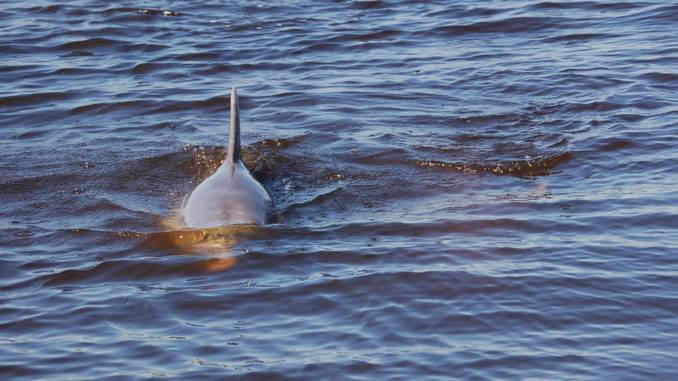
To most people, it’s a mystery why red drum, especially slot-size and just above-slot (18 to 27 inches long), mass into huge schools during the winter in inshore waters along the coast.
The reason may disappoint and stun children of the ’60s, who grew up adoring a cute marine mammal on a TV show called “Flipper.”
“Schooling is a survival technique,” said guide Bryan Goodwin. “They school 12 months a year, but they school tighter this time of year.”
The reasons red drum circle the wagons are porpoises.
“They’re getting the best protection they can from Flipper,” he said.
A school of porpoises (they also swim in pods during the winter) can make short work of even a large drum up to 50 pounds, Goodwin said. “I’ve found carcasses with the head and everything else chewed off, and I mean big fish.
“Porpoises are like baby killer whales when it comes to reds; they’re voracious.”
One good result of reds’ fear of porpoises is it drives them into shallow water where anglers can spot them easier and cast a jig to them.


Be the first to comment